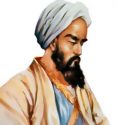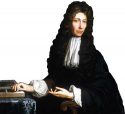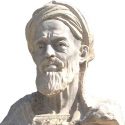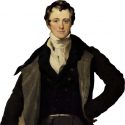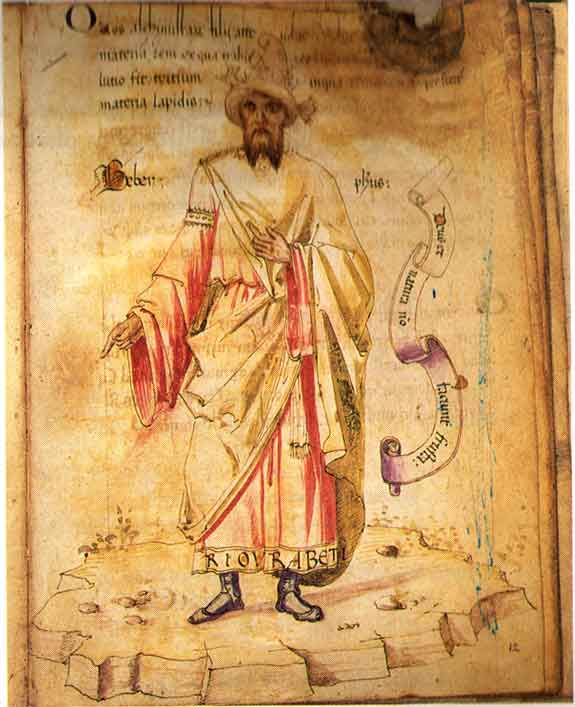 Jabir ibn Hayyan is one of the most brilliant scientists in the Golden Era of Muslims. He is famous for inventing various instruments for chemistry experiments, and he also performed many chemistry experiments himself. He found many new chemicals which include hydrochloric acid. Due to a lot of work in the field of chemistry, he is considered to be the founder of chemistry in the modern world.
Jabir ibn Hayyan is one of the most brilliant scientists in the Golden Era of Muslims. He is famous for inventing various instruments for chemistry experiments, and he also performed many chemistry experiments himself. He found many new chemicals which include hydrochloric acid. Due to a lot of work in the field of chemistry, he is considered to be the founder of chemistry in the modern world.
Jabir ibn Hayyan, also known as Geber, belongs to present-day Iran and was born in the year 721 CE. During his childhood, his family had to migrate to the land of Arabia where he got his early education from famous scholars of his time and gained knowledge of Greek, Persian, and Indian literature. His father was one of the supporters of the Abbasside caliphate and died for the same reason.
When Abbasside’s caliph, Harun al-Rashid, came into Power, he was able to make connections with his ministers. Soon he became a physician and practiced medicine with the support of the caliph. He was a famous physician and cured many powerful personalities. He also worked on many chemicals and experimented on them. Jabir had to travel a lot to acquire existing knowledge of chemistry. He was well funded by the caliph for his travel expenditures. He presented his work to the caliph Harun al-Rashid in the Book of Blossom.
Jabir ibn Hayyan was the founder of alchemy which served as the foundation for modern chemistry. When supporters of Jabir (Geber) were put to death by the Caliph for some unknown reasons, he fled to Kufa (modern-day Iraq). In Kufa, Jabir (Geber) had set up a laboratory where he continued working on chemistry. Jabir couldn’t hide from the caliph, he was soon caught and house-arrested. He lived the rest of his life in house arrest until he died in 815 CE.
Alchemy
Alchemy is the term used for medieval-era time chemistry that was founded by Jabir ibn Hayyan. He developed expertise in experimental approaches for working on materials and Chemical Reactions between them. Jabir had well documented the alchemical process, such as distillation, sublimation, crystallization, and amalgamation of metals. He also introduced the system of classification of materials into spirits, metals, and slats.
Jabir also conducted various experiments on the transmutation of metals, such as Iron, into gold by some chemical process. He was not successful but documented his research and process in which he failed. Alchemy was used till the 17th century for making gold out of other metals. One of the famous scientists, Sir Isaac Newton, was also interested in alchemy and conducted several experiments for the transmutation of metals.
Discoveries and Contributions
Jabir Ibn Hayyan (Geber) contributed significantly in the field of chemistry. Some of the important discoveries and contributions he made are:
- Discovery of Acids:
He was the first to produce sulfuric acid and nitric acid. Sulfuric acid is a very famous acid that most people know about. This is because sulfuric acid is used in the batteries of vehicles. - Properties of Substances:
He introduced many properties of a substance, such as warmth, coldness, moisture, and dryness. - Purification Method of Gold:
He separated the elemental gold from impurities with the help of lead element and saltpeter. - Purification Method of Mercury:
He found a method of purifying elemental mercury. - Alkali (base):
Some substances can make the water softer; Jabir called these substances alkali. - Discovery of Aqua Regia:
A mixture of acids called aqua regia, was also manufactured by him. Aqua regia can dissolve elemental gold which is inert to most acids. - Chemistry Equipment:
Jabir developed more than 20 kinds of chemistry lab equipment; most of them are also used today in laboratories. Some of the lab equipment that he made are retort and Alembic. - Purification by Crystallization:
He developed a method of purifying substances by the process of crystallization.
Facts
- Jabir ibn Hayyan (Geber) wrote more than 3,000 research articles and treatises in his life, and more than 70 books were translated into other languages.
- He suggested a theory which states that metals are composed of sulfur and mercury. By varying the amount of these two substances, you get a new metal.
